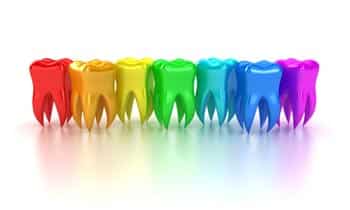Pedodontic Services

Below is a list of some of the services we provide. You may click on any of the services for a short description of the treatment.
Preventative:
Regular cleanings help keep gums healthy and teeth cavity-free. A dental cleaning includes removal of tartar and plaque and having the polished to remove stains and further buildups of plaque that are not removed when regular tooth brushing is performed.
Fluoride is a natural substance that helps strengthen teeth and prevent decay.. Fluoride treatments are administered at the office. It is applied to the teeth in a gel, foam or varnish form.
During a regular check-up, oral hygiene instructions are given to both patient and parent to reduce the risk of plaque and tartar build-up, as well as cavities. Instructions include, but are not limited to proper brushing techniques, flossing, and using mouth rinses.
Sealants protect your child’s teeth from decay. Sealants are placed on the biting surfaces of premolars and molars to seal the grooves and pits of the teeth.. The teeth are prepped for the sealant application and the sealant is painted directly on the chewing surface of the teeth and then hardens. Sealants are applied in one visit.
Diagnostic:
An oral evaluation is recommended every six (6) months to prevent cavities and other dental problems. During an oral evaluation a thorough examination is done to check the hard and soft tissues of the mouth.
Dental X-rays are a valuable diagnostic tool used to identify decay, extra teeth, bone defects, tumors, cysts and check the progress of previous procedures. Latest technology now allow for digital X-rays, which reduce radiation exposure more than 50 percent, and produce instant, high-quality images that can be viewed immediately by the dentist and the patient.
Restorative:
Tooth-colored fillings are the most lifelike material used to fill cavities. Composite fillings can be done in one visit. Once the decay is removed from the tooth, it is filled with this composite material and left to harden immediately afterwards.
Amalgam fillings are strong and durable. Amalgam fillings can be done in one visit. Once the decay is removed from the tooth, it is filled with this amalgam material and hardens immediately.
Root canals involve treating decay within the inside of the tooth. If the inside of the tooth, known as the dental pulp, is damaged it will gradually decay if left within the tooth. The process involves removing the pulp, cleaning out the root canals, and packing the canals with material that will help restore the tooth until it is time for it to exfoliate (or fall out on its own naturally).
A dental crown is a restoration that covers or caps a tooth, restoring it to its normal size and shape. Crowns are necessary when the tooth is broken down to the point where a filling won’t be effective. In order to effectively place a crown, tooth structure may be taken away to help create an esthetically pleasing fit.
A dental extraction is the removal of extremely decayed or broken teeth. To perform an extraction, the area is anesthetized to minimize discomfort and the tooth is then rocked back and forth until it is removed from its socket.
Esthetic:
Cosmetic bonding is the process of filling or restoring teeth with a tooth-colored material in order to maintain its natural appearance. In order to bond a tooth, tooth colored material is added to the tooth to build it up.
Interceptive Orthodontics:
A habit appliance is useful to help stop a thumb or finger habit and/or to help re-train an improper tongue position or swallowing pattern. It is necessary to place an appliance to minimize the harm and distortion the habits or tongue posture can have on teeth. Most habit appliances are banded for adhesion to the back molars and are not removable.
Space maintainers are used to keep teeth from drifting into an empty tooth space due to early loss of primary (baby) teeth. Baby teeth act as a guide for the eruption of the permanent teeth. A space maintainer is made of stainless steel and/or plastic. It can be removable or fixed to the teeth.
